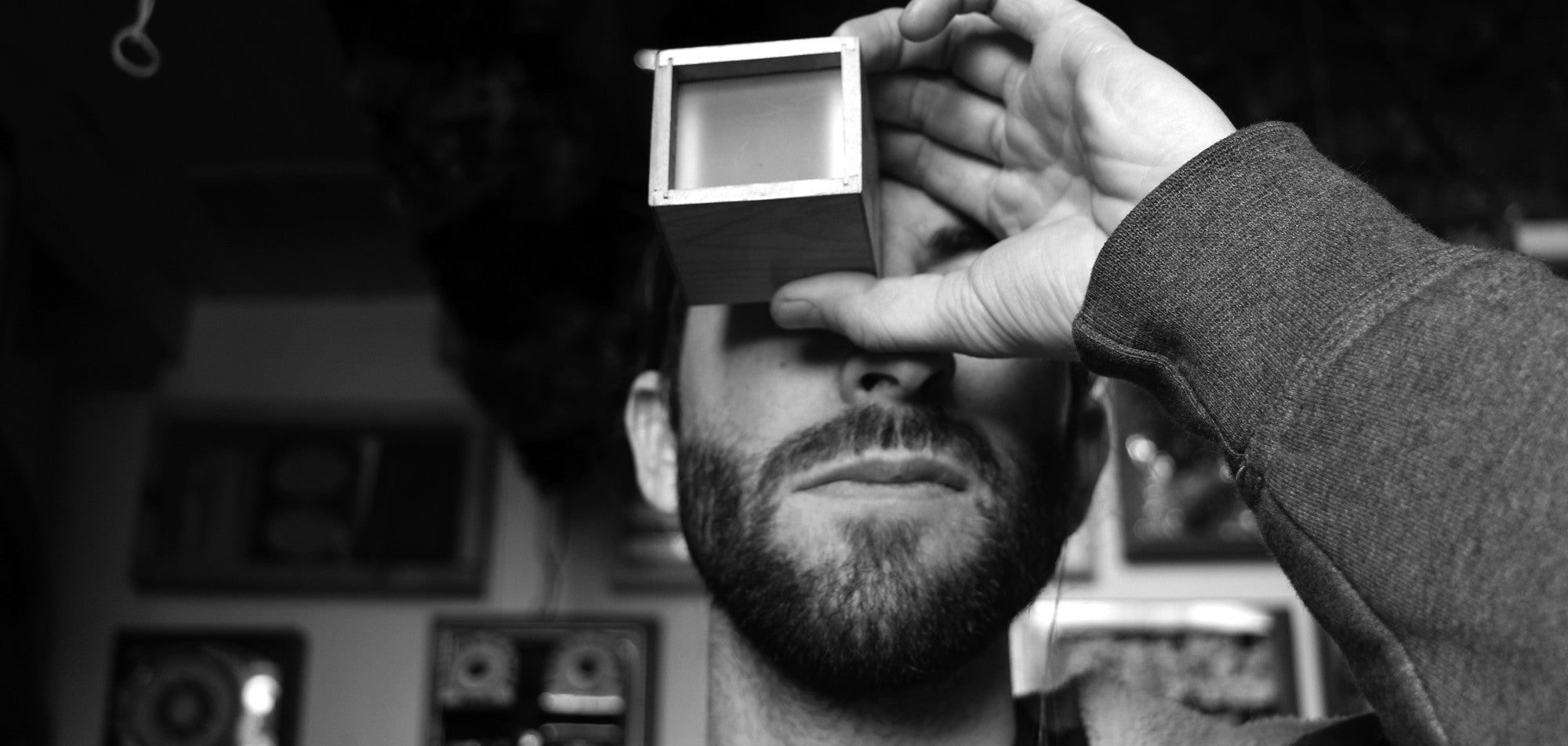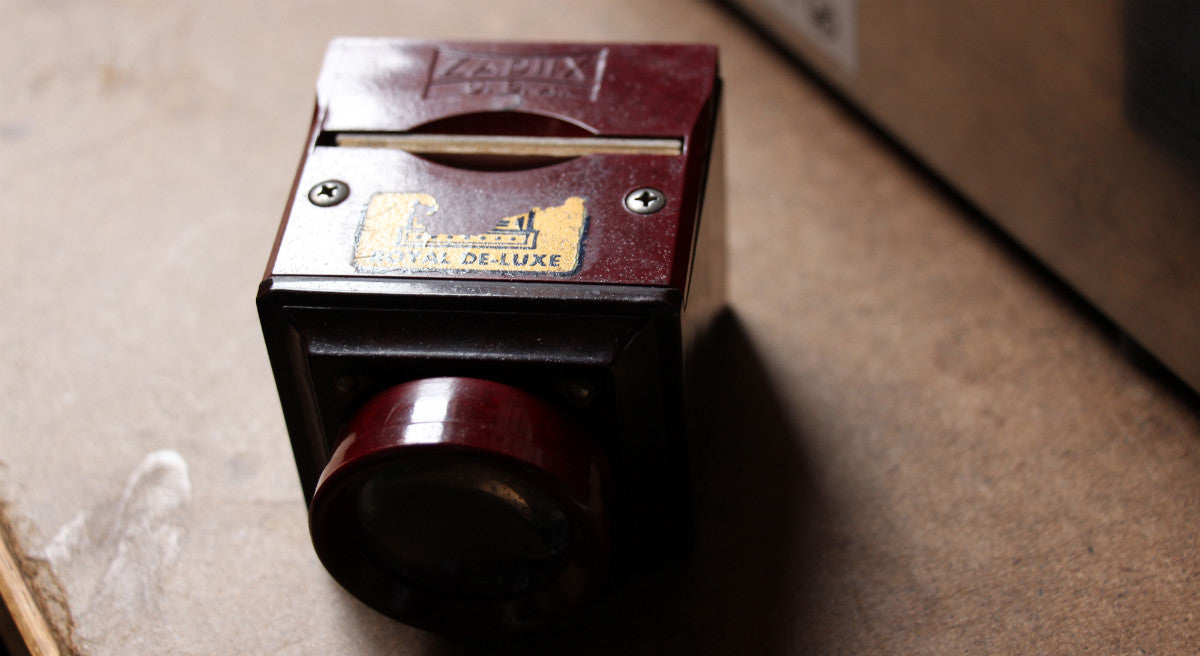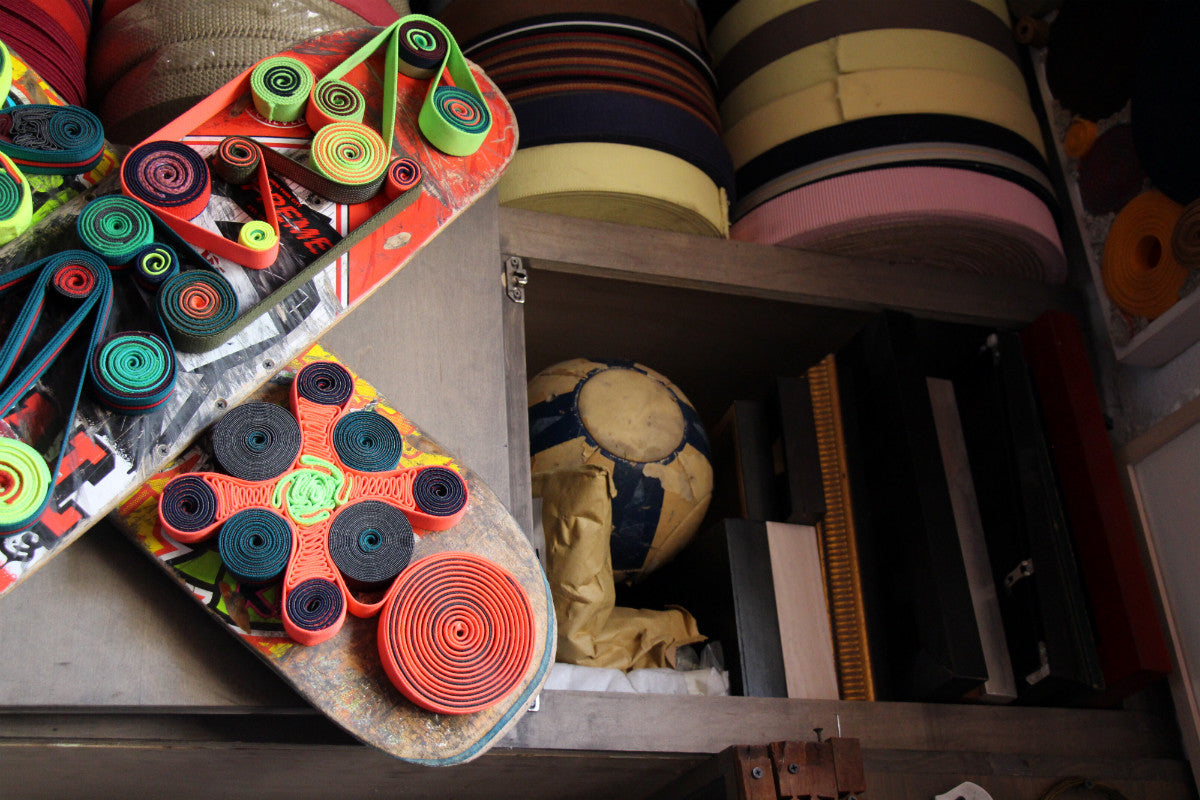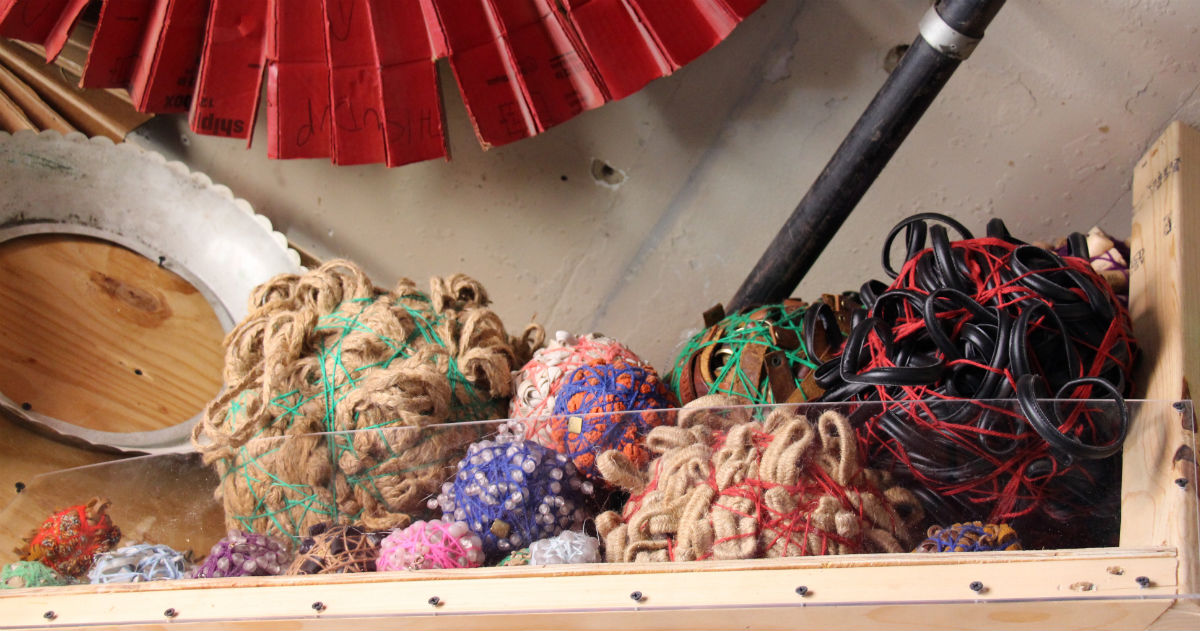Erin: What are you curious about?
Ian: I’ll forever be curious about the natural world; biological diversity, adaptation, the resilience of life, patterns, mysteries, ordered systems, and chaotic conditions.
Trash also intrigues me. We throw things out that we think we don’t “need” anymore, because our definition of need shifts. I’m deeply curious about this mental process. How we define the utility of materials. How we quickly forget something ever had a use in the first place.
Erin: Describe your art and describe your process.
Ian: As a sculptor I explore the inherent aesthetics of material waste. I collect discarded, manufactured goods, sparing them from disposal in order to invent and impose my own process of reuse and decomposition. By finding creative fuel in urban detritus, I imbue undervalued material with an uncommon value, thereby presenting the processes of disposal and decomposition as appealing rather than revolting. Through the actions of material acquisition and manipulation, I hope to gain insight into how to live more sustainably.
Erin: Where do you get your inspiration from?
Ian: Most often I get inspired by the materials themselves. I rarely go out seeking specific things. Rather I stumble upon a unique collection of objects and subsequently learn how to use and incorporate them into my work. Sometimes this process is immediate. Sometimes I hold onto something for years before I eventually find a use for it.
I tend to pick things apart until I’m left with smaller composite pieces, then start using those pieces to build up something new. As someone who did a lot of puzzles as a kid, the process of fitting disparate shapes together comes almost naturally.
Erin: You studied biology and worked in a genetics lab. What did you do there and what pushed you to make the leap into art?
Ian: I worked for a year at Brigham and Women’s Hospital in Boston as a lab technician for a group of researchers conducting large-scale studies focused on various pulmonary diseases. Then I moved to Salt Lake City (to snowboard), where my job was to manage a colony of over 400 mice for a lab that studied muscle formation. It wasn’t the nature of the work that lost my interest, rather it was the overarching focus on publishing, and the politics and frustrations associated with it. Throughout those years working in labs, art provided a calming and rewarding outlet outside of work. Eventually instead of filtering my artistic impulses, I just gave in to them entirely. Despite my career transition, my science education informs who I am and how I think. The requisite practicality, methodology and curiosity that define scientific research seep deeply into my artistic practice.
Another job was working as a groundskeeper at a hospital.
Erin: How did picking up cigarette butts and trash influence your choice of medium today?
Ian: Working as a groundskeeper for a few months was strangely enough a pivotal experience. It was extremely challenging to make the career switch to art without much experience to fully justify it. I also lacked financial resources, so I needed to find a way to make my art without spending a lot of money on materials. By being constantly confronted with other people’s waste, I discovered an infinite source of materials and inspiration. But it also presented me with a complex problem that needed solving. Humans generate a lot of waste. We can’t sustain this level of consumption and disposal without serious repercussions. This dilemma has and will continue to fuel my creative endeavors.
Erin: You make compelling work from discarded items. What does your work tell us about the trash that we rid ourselves of daily?
Ian: I could tell you what I think my art says, but I prefer that my viewers generate their own conclusions. Is it about the trash, or the people that throw out the trash? Or both?

Some of Ian's work with discarded items
Erin: When you moved to New York to focus on art, you got some great advice from another artist. Mind sharing it?
Ian: I was told to avoid focusing on the allure of commercial success. Hard work, dedication, and passion are better foundations for a career as an artist. At the time I was trying to convince my parents, and myself to some extent, that what I was doing wasn’t a mistake. My friend acknowledged the difficulty of the task, yet encouraged me to give it my all for at least a few years. By that point in time if I was still happy and not totally broke, then I would be doing alright.
Erin: I love your viewfinders, which hold single compositions made from various slides.
What’s the story behind this series?
Ian: “Strange Histories” is a newer body of work created from collections of old 35mm slides. The project originated when I responded to an online newsletter post from the Tractenburg Family Slideshow Players, a band who performed music inspired by slides from the 1950s-80s. After 12 years of this process the band chose to artistically move on. I met Jason Tractenburg in his Bushwick apartment, learned the story of his unique family band, and then walked away with thousands of slides. While spending countless hours peering into the lives of the people who took the pictures and considering the complex lifecycle of the slides themselves, I found myself returning to the notion that together we create strange histories.
Erin: What's the best thing about being an artist?
Ian: I think the best part of being an artist also happens to be one of the most difficult. Our future is FULL of uncertainty. Our choices are near limitless. Our paths less defined. People expect us to do the unexpected. We have to live in the moment and deal with the opportunities and impediments as they appear. If we plan too far ahead, we risk being closed and inattentive to the present conditions. It’s a kind of self-awareness that’s hard to explain to people who don’t live that way. It can be both exhilarating and frightening, occasionally even knocking the wind right out of you. But you feel alive.
Erin: What's the worst thing about being an artist?
Ian: One of the things I enjoy least about being an artist is the tendency to compare my art career to those of others. It’s a pitfall born from competition. It’s rarely useful, and often discouraging. Still, at times it’s hard to avoid.
Erin: If you could collaborate with absolutely anyone who would it be and what would it look like?
Ian: It would be an amazing experience to work with Andy Goldsworthy. I love his work. It’s magical. It makes something as beautiful as nature even more beautiful. And most importantly it is playful. While I don’t suspect that I would be able to convince him to put aside natural materials in favor of trash, I imagine our collaboration as a fusing of the naturally-made and the man-made. I see it as something that could help place humankind within the natural context. We humans are intrinsically part of the environment. Like rocks and leaves, nature made us.
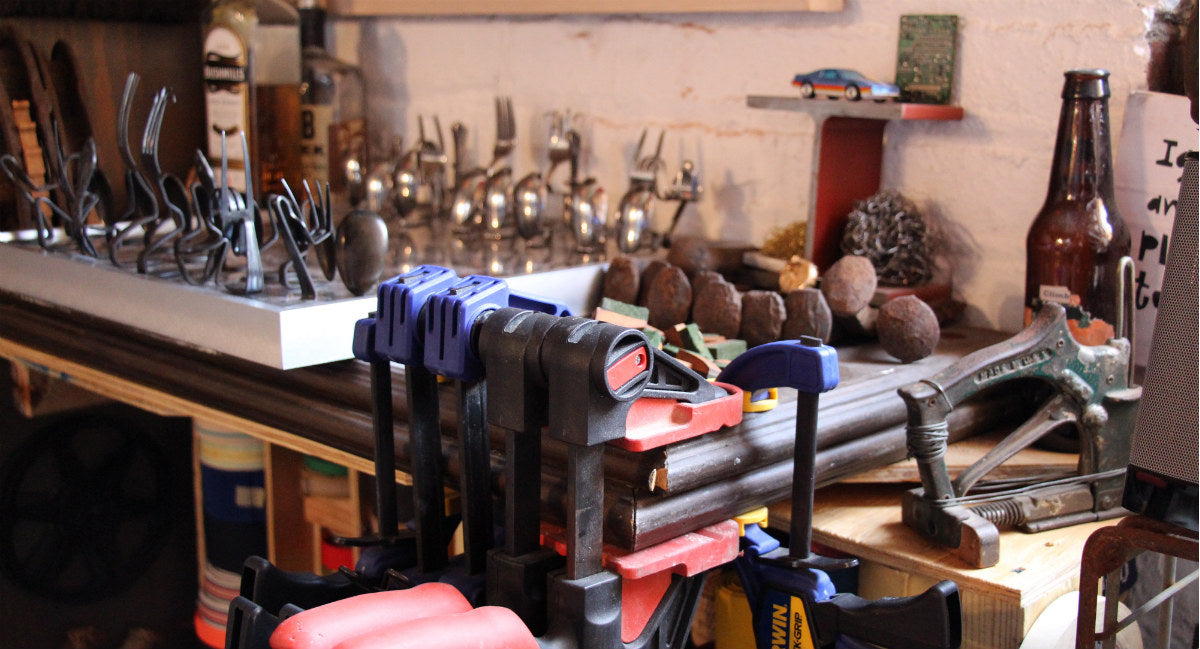
Ian's studio in Cobble Hill, Brooklyn
Erin: What is your dream project?
Ian: For a while now I’ve been dreaming of upscaling a collaborative project I helped create years ago at the Bonnaroo Music and Arts Festival. It would involve playing with copious amounts of yarn. It’s a collaboration with the public. There would be no rules. It sounds childish, but that’s the point: to make adults feel like children. I’ve seen projects like it before. The novelty of the project isn’t found necessarily in the concept, but in the final product. It can be a tough sell because it takes a lot of energy and material to fully manifest. In my dreams, the collaboration would be on-going for 1-2 months, allowing me to literally sculpt an elaborate environment one thin line at a time. It would evolve, then grow, then evolve some more. It would be especially fun to present this project within a retrospective of my sculptural installation work, letting my old work become the physical and creative substrate for the collaborative process.


